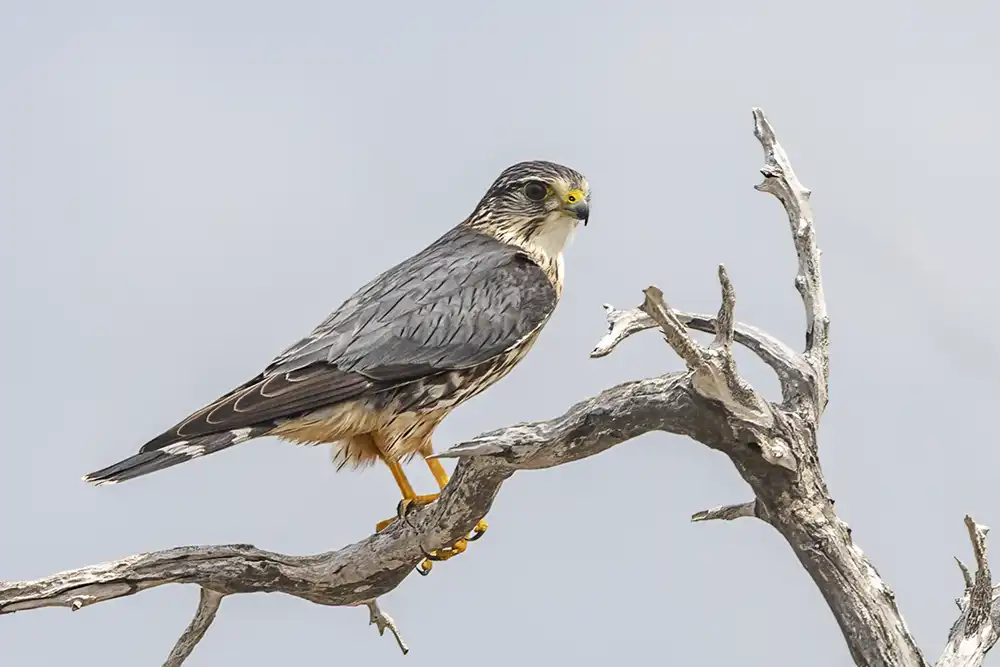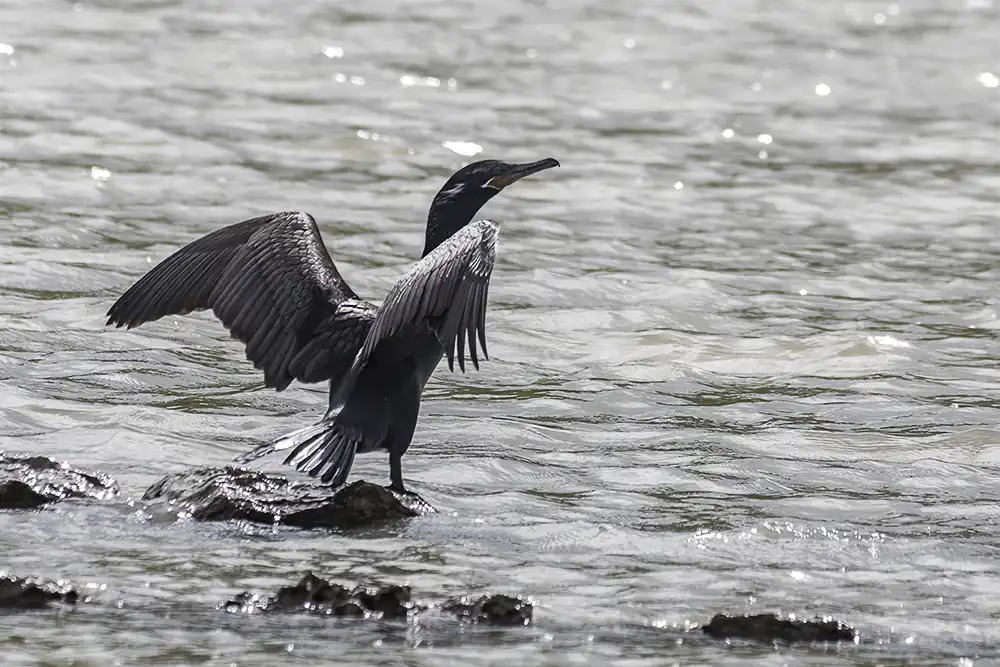Do you want to know which birds you can encounter on Bonaire, or have you spotted a large bird on Bonaire and want to learn more about it? Below you will find the five largest birds of Bonaire: the Caribbean flamingo, the caracara, the osprey, the brown pelican, and the frigatebird.
Sharing Island Love
Thank you for your interest in our beautiful island in the Caribbean! We love sharing our passion for Bonaire with everyone — locals, visitors, and of course, with our guests during Our tours. Curious how we do that? You can find all the details in Sharing Island Love.
With Island Love,![]()
Are you crazy about birds? Join our tours and let your curiosity take flight.
Onderwerpen
Text continues below…

1. The Caribbean Flamingo (Phoenicopterus ruber)

Bonaire loves the Caribbean flamingo (locally known as chogogo in Papiamentu), and these birds love Bonaire too. During our tours, we often encounter them. The island is home to one of the few breeding colonies of these flamingos. Due to the breeding birds being highly sensitive to disturbance, the colony is located in the middle of the salt flats, far away from human activity.
Flamingos search for their food in shallow waters. With their adapted beaks, they sift out snails, brine shrimp, and mosquito larvae from the water. You can encounter flamingos wherever there is water on Bonaire. During a trip around the southern part of the island or while en route to Lac Cai, you are guaranteed to come across them.
Tip: If you spot a flamingo by the roadside while driving, do not get out of the car to observe the bird. The bird will likely walk away immediately. By staying in the car, you can peacefully observe the flamingo.
Want to learn more about this iconic bird? In our richly illustrated photo blog, you get an in-depth look at The Flamingos of Bonaire!
2. The Caracara (Caracara plancus)

The most common raptor on Bonaire is the caracara (locally known as warawara in Papiamentu). When perched on a cactus, it is an impressive bird, with its brown plumage, finely patterned light chest and belly, and the scruffy crest on its head. However, it shows its best features during flight, revealing the white details in its tail and wingtips. Most often, you find this bird on the ground, walking with a somewhat unstable gait while searching for food. During our tours and hikes in the northern part of the island, we frequently encounter them.
Although the caracara is well-equipped for hunting, it is a true opportunist. It prefers scavenging and is often found along the roads of Bonaire. Lizards are frequently killed by passing vehicles, and the caracara eagerly cleans up these roadkill. It also knows how to handle larger carrion. Due to the bare skin between its beak and eyes, it somewhat resembles a vulture. This skin is colored yellow to pink.
Other raptors on Bonaire include the barn owl (Tyto alba), the American kestrel (Falco sparverius), the merlin (Falco columbarius), the peregrine falcon (Falco peregrinus) and the osprey.



3. The Osprey (Pandion haliaetus)

The osprey (locally known as gabilan piskadó in Papiamentu) is one of our favorite birds on Bonaire. They can be found along the west coast as well as near the salinas and the mangroves. The birds have a white underside and a brown upper body. The head is also white, although it has a dark beak and a prominent dark stripe behind the eyes. The white plumage is especially ruffled, easily affected by the strong Bonairean winds.
You might come across the osprey resting on a bare branch, but you have the best chance of seeing this bird while hunting. It flies at a considerable speed above shallow water, suddenly plunging down onto its prey. Its razor-sharp talons strike the water, and sometimes the bird disappears completely underwater, struggling to get back into the air with its catch. Once the bird regains altitude, it pauses briefly to shake off any water. If successful, it flies back to its favorite bare branch or rock to devour its prey. Otherwise, the hunt resumes.
There have been reported incidents of ospreys not resurfacing after diving for prey that was too strong. Underwater, their talons cannot release their grip.
Give the Osprey some space
The osprey is having a hard time on Bonaire. Especially in winter, these impressive birds have to share their narrow coastal habitat not only with other ospreys but also with many residents and visitors. With their striking appearance, they are easy to spot and often get chased multiple times a day by people trying to take a photo. In their rush to escape, they sometimes even abandon their catch. So please keep your distance from this beautiful bird or watch it quietly from your car.
4. The Brown Pelican (Pelecanus occidentalis)

Another fish-eater is the brown pelican (locally known as pelikan in Papiamentu). With a wingspan of over two meters (6 feet), these large birds are impossible to miss along the west coast of Bonaire. In flight, their neck is retracted, making them appear even more massive. Despite weighing up to five kilograms (11 pounds), they fly quite gracefully, especially when gliding just above the water’s surface.
The brown pelican is gray to brown in color, with a light underside that reflects the blue color of the water above the sea. During the breeding season, the head turns white, and the back of the neck becomes brown.
A fishing pelican scans a few meters above shallow water for its prey. When it spots a fish, it rolls forward and dives beak-first with a significant splash into the water. After the dive, it drains the water from its pouch-like lower beak. If it caught a substantial fish, you can see it wriggling in the pouch. By tossing its head back, the pelican lets the entire prey slide down its throat. Then, it takes flight again.
Pelicans are always found near the water. They rest on poles, piers, or substantial rocks on the beach. You can also find them floating in the water. The Slagbaai is a great place to observe them up close.
5. The Magnificent Frigatebird (Fregata magnificens)

With an impressive wingspan of up to almost 2.5 meters (8 feet), the Magnificent Frigatebird (locally known as makuaku in Papiamentu) is the largest bird on Bonaire. However, the bird weighs only about one and a half kilograms (3 pounds). You can mostly find these birds soaring high above the coastline of Bonaire. They have the shape of an anchor, and their tail is long and forked. The males are entirely black, while the females have a white breast. The young birds also have a white head and white belly parts. When the breeding season is approaching, some males develop a bright red throat pouch, which they can inflate to attract females.
Frigatebirds spend most of their day in the air but rest in the mangrove areas around Lac Bay. During a tour around the southern part of the island, we consistently encounter them. Unlike pelicans, frigatebirds hardly touch the water during hunting. They mainly feed on flying fish and other fish that live near the water surface. They snatch their prey from the water in a swift flight using their hooked beaks. However, they prefer to scavenge fish scraps. That’s why they are often seen in the Sorobon harbor when fishermen are cleaning their catch. Frigatebirds also steal the catch from their fellow birds and other coastal birds. They exhaust their victims with their acrobatic maneuvers until they give up, dropping their catch.
Other large dark-colored seabirds on Bonaire are the Neotropic Cormorant (Phalacrocorax olivaceus) and the Brown booby (Sula leucogaster). The latter bird is brown but appears black against the clear sky during flight.


A Tour with HopiBonaire
During a tour with HopiBonaire, you embark on an exploration of the most remote and beautiful places on Bonaire. Moreover, you will be traveling only with your own group, ensuring an intimate and personal experience at your own pace. We are flexible and we’re not clock-watchers.
All tours can be customized to your preferences. Ready for an adventure? Explore our tours offerings here.
Text continues below…

Read more?












